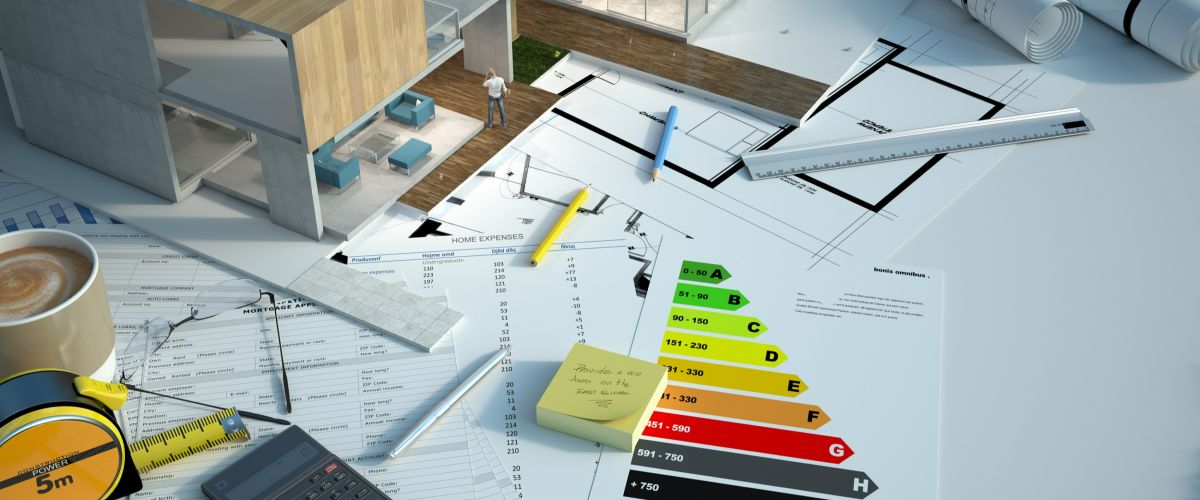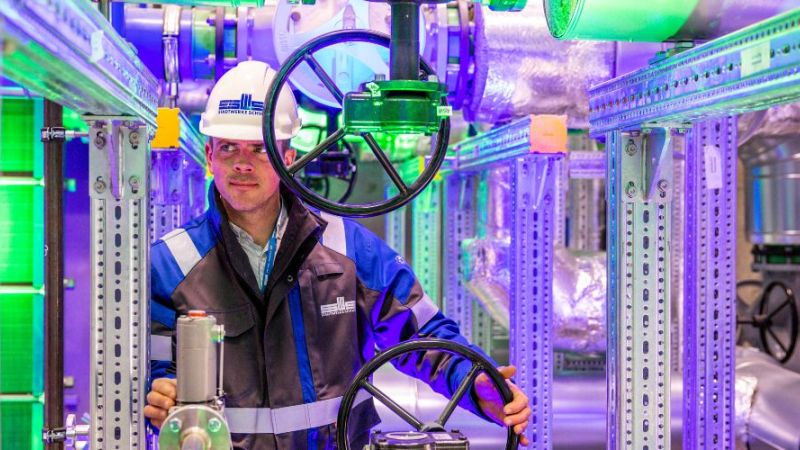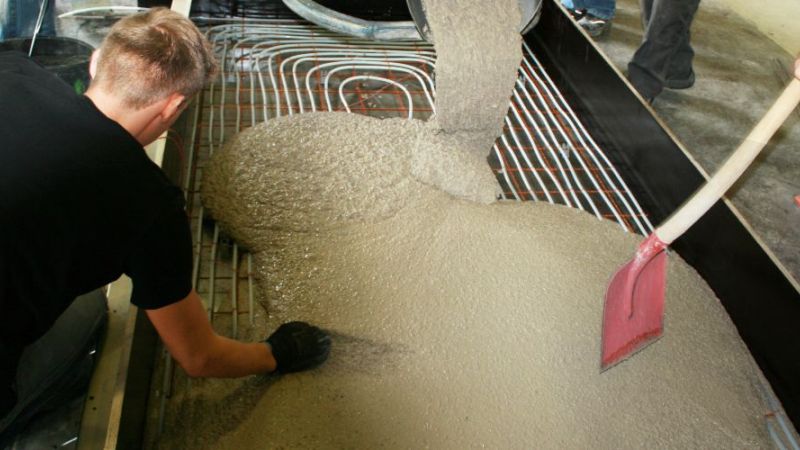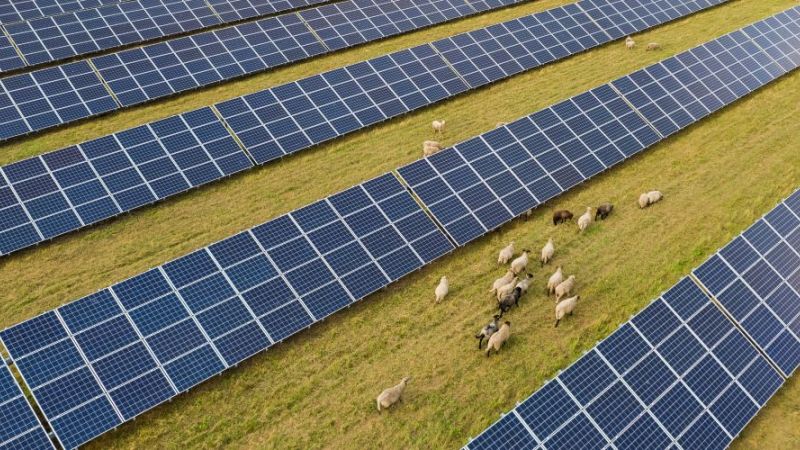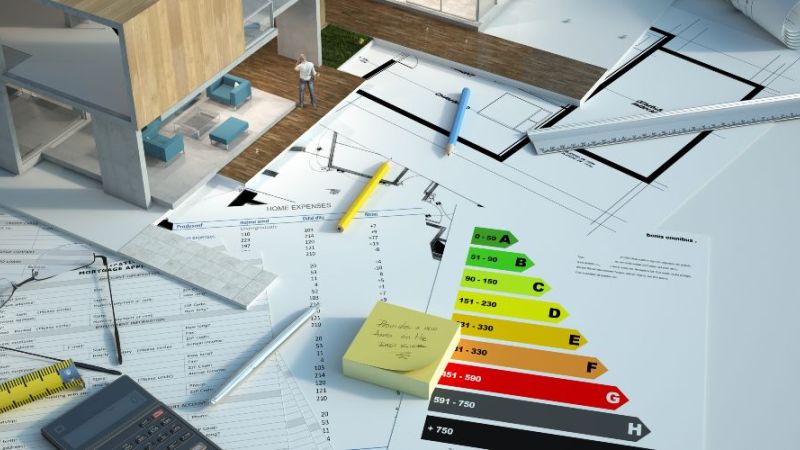Mission Heat Transition 2045
"We accelerate the transition to a climate-neutral and efficient heating and cooling supply."
More than half of final energy consumption in Germany derives from the production of heating and cooling. So far, only a small proportion of this is climate-neutral. While the energy transition is making progress in the electricity sector, progress in the heating sector is still too slow. This includes all relevant areas of utilisation and infrastructures of the energy system. Research must set an important course here: Fossil fuels must be replaced by renewable energies and the utilisation of waste heat, heating and cooling requirements must be reduced through efficiency measures, and electricity and heating infrastructures must be coupled and optimally deployed.
Although many technical solutions are already available in the heating and cooling sector, they are not yet adapted to all requirements. Research and development is needed here so that further urgently needed technologies can be developed and new technologies that are not yet established on the market can be prepared for widespread use. The innovations must be integrated into the system, standardised and transferred to wider use. Socio-economic interactions and regional characteristics must be taken into account.
Biogenic residual and waste materials play a special role in the heat transition. The priorities for biomass utilisation set out in the German government's biomass strategy are also decisive and guiding for technology funding within the framework of energy research.
In order to heat and cool buildings in a climate-neutral way by 2045, renewable energies must be used sustainably and efficiency measures implemented. In future, heating and cooling will be provided by climate-neutral technologies and their coupling. The challenge here is to supply both densely populated areas and rural areas in the best possible way. Target group-orientated, user-friendly and comfort-oriented developments will ensure acceptance among the population.
1.1 Scaling up innovative solutions
Standardised holistic solutions are to be developed for future heating and cooling technologies. Energy research is developing new processes for the industrial pre-production of refurbishment components and technology modules. It should be possible to scale up and automate their production.
1.2 Reducing complexity for planners, tradespeople and users
Construction planning, design, installation, maintenance and operation of new systems and components should be simplified. Digital workflows provide support throughout the entire life cycle. For existing buildings, experts should develop methods that automatically record building structures, estimate heating and insulation requirements and evaluate refurbishment measures. To this end, interfaces must be standardised and the systems made more user-friendly.
1.3 Increasing energy efficiency from the component to the overall system
Heat losses in buildings and heating networks should be minimised, for example through new components, materials and insulating materials. The systemic interaction of the individual components must be planned and tested. Digital networking plays an important role here. For technologies that will be widely used in the future, such as heat pumps, energy efficiency should be increased, but quality assurance should also be made possible.
1.4 Sustainable use of resources
In future, it will be necessary to further develop and establish approaches and tools for life cycle assessment and life cycle costing. The carbon footprint and recyclability of new materials, components and building parts must be improved. In addition to the substitution of materials, the service life of components should be increased. Data-based approaches facilitate decisions, for example in the area of new construction or refurbishment.
1.5 Improve acceptance and participation
Different heat generators and the large number of heat consumers pose a particular challenge in the building sector. In addition to technical solutions, the different perspectives of owners, tenants, investors and local authorities, for example, must be taken into account. This includes social and economic issues.
Processes in industry and commerce run at different temperature levels. Experts must take this into account when defossilising the heating and cooling supply. Reducing the heat requirement is the top priority. The supply of heat must be switched to greenhouse gas-neutral sources. Remaining heat requirements can be made climate-neutral using synthetic fuels. Other options include the sustainable utilisation of biogenic residual and waste materials and, in low to medium temperature ranges, the use of solar thermal energy, geothermal energy and heat storage systems.
2.1 Defossilising medium and high-temperature processes
In addition to direct electric heat generation, processes for utilising biogenic and synthetic fuels (hydrogen or derivatives) and concentrating solar thermal energy are to be further developed until they are ready for use. In doing so, feedback effects on process management, products and plant technology must be taken into account. The optimisation of process management should reduce the overall energy requirement.
2.2 Preparing industrial and large heat pumps for ramp-up
In future, industrial heat pumps will provide process heat at a low temperature level across the board. To this end, experts are expanding performance classes and temperature strokes and improving efficiency and sustainability. Operation with climate and environmentally friendly refrigerants is mandatory. The experts provide general design and operating concepts. They develop cost-effective manufacturing processes and improve testing and maintenance methods.
2.3 Further developing high-temperature heat pumps
In future, high-temperature heat pumps should increasingly provide process heat in the medium temperature range (from 200°C). To achieve this, the usable temperature ranges must be extended, variable temperature strokes realised, the performance classes increased and climate and environmentally friendly refrigerants used. Experts are applying and further developing this technology in demonstration projects.
2.4 Increase the efficiency of thermal processes and components
Experts should optimise process control and further develop the combination of several heat generators. Heat and cold storage play an important role here. Product developments and new processes help to save energy. In the case of thermal and thermochemical storage systems, the aim is to reduce costs, increase efficiency and optimise charging/discharging processes. The range of storage temperatures is to be increased.
2.5 Increasing the resilience and system-friendly operation of industrial processes
Digitally controlling networked industrial processes is an important task. Stable processes and a reliable energy yield are at the centre of all developments. The repercussions on the power supply and its stability are important here. Grid-friendly operation and corresponding load management are possible by storing heat or cold. The aim is to realise such potential and attract new providers of system services for the energy system.
The heating networks should increasingly utilise renewable energy sources and waste heat - also in combination with heat pumps. Network temperatures must fall. Heat supply and demand should be harmonised both in the short term and seasonally. New methods, such as artificial intelligence, can support grid planning and grid control technology. Demonstration projects and scientific monitoring support the introduction of new concepts.
3.1 Switching heating networks to renewable and sustainable heat sources
In addition to renewable heat sources and waste heat, biogenic and synthetic energy sources can serve as a reserve in a defossilised heating network and cover peak loads. Sustainability and environmental compatibility should be taken into account when tapping into renewable heat sources. System components must be adapted to the new requirements.
3.2 Further developing heating network technology and control
The construction of low-temperature networks and cold local heating networks as well as the integration of short-term and seasonal heat storage into the system are important tasks. This requires new pipe systems and modern, low-maintenance and durable network, measurement and control technology. New methods for controlling complex and dynamic heating and cooling networks are also necessary.
3.3 Planning the heating and cooling supply using innovative methods
Experts should develop practical and widely applicable planning tools and design methods. In doing so, they must take individual requirements and local conditions into account and can derive general concepts on this basis. Municipal heat planning procedures must be taken into account and scientifically supported.
3.4 Develop and optimise efficient large-scale heat storage systems
Suitable heat storage systems and corresponding technologies should be systemically integrated, further developed and trialled. This includes the optimisation and upscaling of innovative storage concepts and materials. In addition, suitable operator models for large-scale heat and cold storage systems should also be considered.
3.5 Providing blueprints for regional heating infrastructures
There is a need for further research due to the decentralised and diverse nature of regional conditions. Rural areas should be opened up and solutions found for heterogeneous, sometimes small-scale and evolved supply structures and building stocks. The aim here is to develop exemplary energy concepts that can be transferred to other regions.
Short and long-term energy storage offers great potential for a system-serving contribution within the overall energy supply and in sector coupling. Examples include power-to-heat systems in conjunction with heat storage systems, the grid-friendly operation of heating and cooling systems in the industrial and building sectors and other system services to stabilise the electricity grid.
4.1 Diversify heat sources
For a resilient and secure energy system, it makes sense to have as broad a technology mix as possible. In addition to renewably generated electricity, solar and geothermal energy, hydrogen and the sustainable use of biogenic residual and waste materials as well as large-scale storage systems will therefore play a strategic role in the heat supply in the future. The aim is to tap into as wide a range of different energy sources as possible and link them according to their characteristics.Die kurz- und langfristige Energiespeicherung bietet großes Potenzial für einen systemdienlichen Beitrag innerhalb der gesamten Energieversorgung und bei der Sektorenkopplung. Beispiel sind Power-to-Heat-Systeme in Verbindung mit Wärmespeichern, der netzdienliche Betrieb von Wärme- und Kälteanlagen im Industrie- und Gebäudesektor sowie weitere Systemdienstleistungen zur Stabilisierung des Stromnetzes.
4.2 Improving sector coupling
Heating and cooling systems can be operated in a grid-friendly manner and surplus electricity can be stored in the form of heat or cold in the short term or seasonally. In addition to thermal storage, load shifting/demand-side management and reconversion of high-temperature heat into electricity represent further possibilities. Local trading mechanisms and new business models can support these. Researchers should also utilise the decentralised flexibility potential of buildings.
Sprinter targets
Sprinter targets are short and medium-term goals to be achieved within a research mission to support the achievement of a climate-neutral and secure energy system by 2045 through energy research.
- Sprinter target 1
By 2030, high-temperature heat pumps that provide process heat above 300° Celsius will be used in industrial processes. - Sprinter target 2
The goal of the BMWK's geothermal campaign to develop a geothermal potential of 10 terawatt hours in medium and deep geothermal energy by 2030 will be actively supported by energy research through the further development of the supply and evaluation of underground data and the development of modern exploration technology. - Sprinter target 3
By 2030, three storage solutions and systems each for the industrial and neighbourhood sectors will be in use. These store surplus energy (from electricity from renewable energies, waste heat or solar thermal energy) so cost-effectively that the discharged useful heat is price-competitive with heat generation from electricity or synthetic fuels. - Sprinter target 4
By 2030, new types of building insulation materials will be used that require only half the primary energy input over the entire product life cycle. They will achieve the same insulating effect as today's conventional insulating materials.

